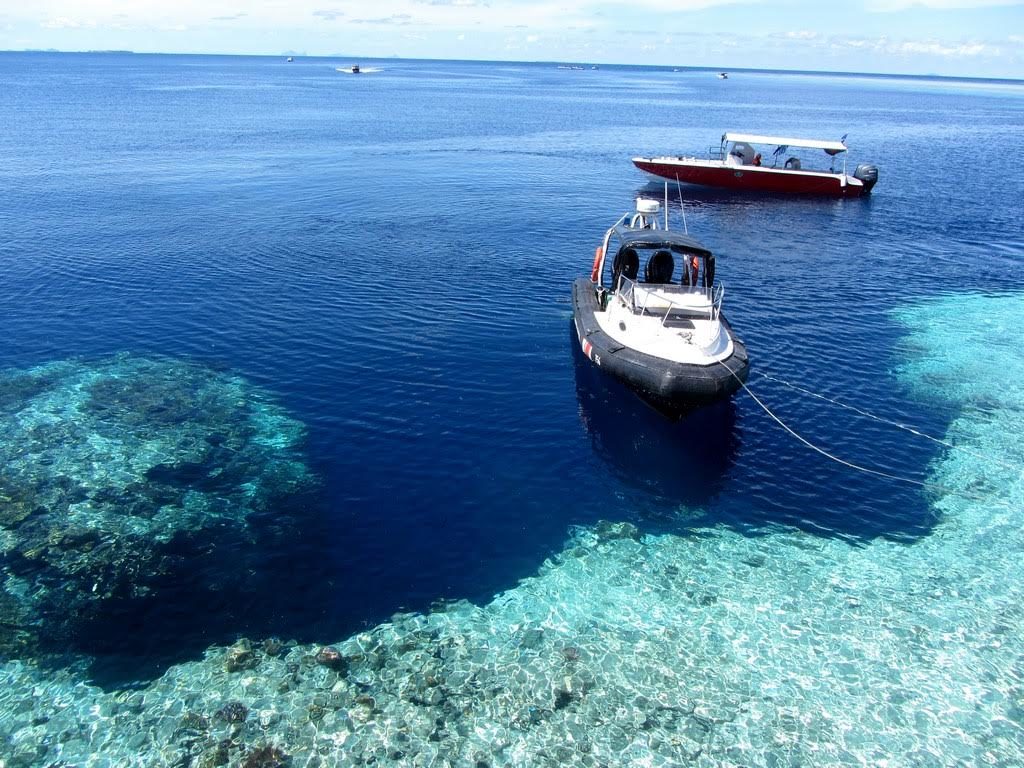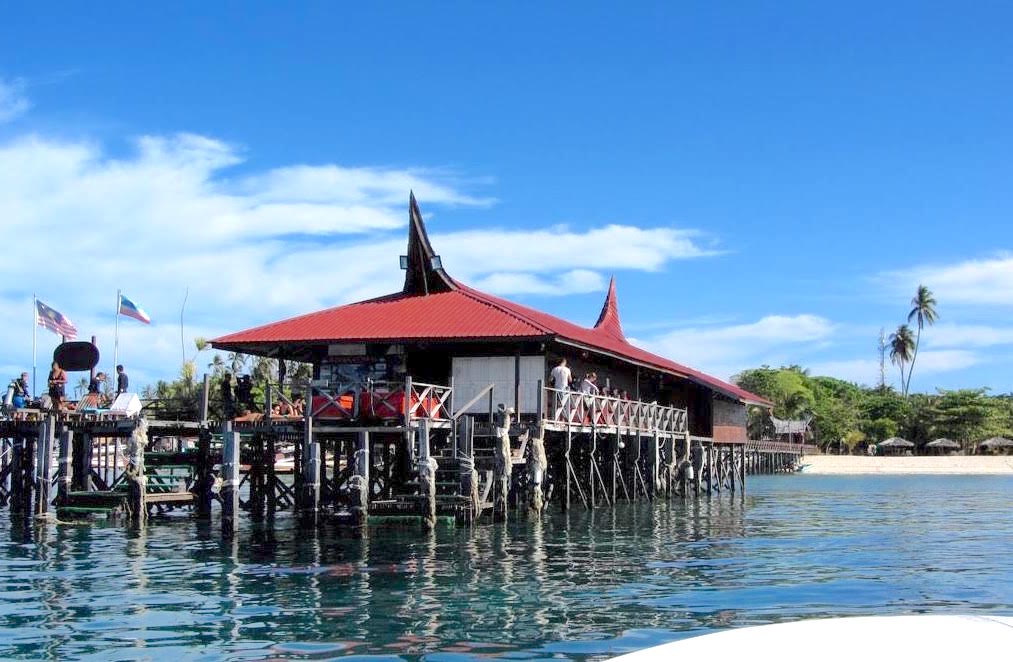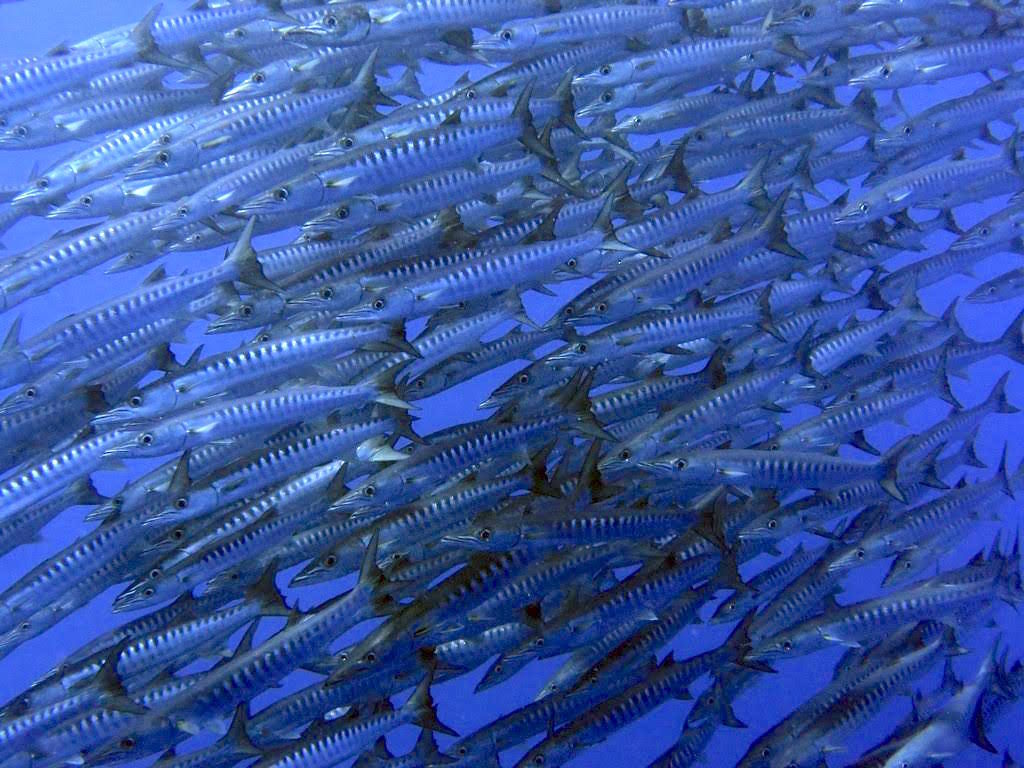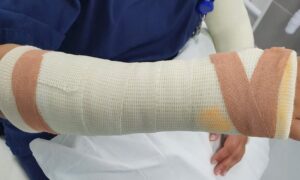(Editor’s note: This post is part of a continuing series documenting Mike Egger’s global adventures from Tanzania to Uzbekistan. You can see his recent post here about diving on Pemba Island in Tanzania.)
African and Oriental Ltd. (aka Raf and Cisca Jah) arranged for another scuba diving adventure, this time to Malaysia.
To get to Kuala Lumpur to make my connecting flight to Borneo, I had to go through Singapore. This gave me a chance to see some friends I hadn’t seen for a few years, Huw and Trisha Lawford.
The Lawfords took me to the Singapore Cricket Club, established in 1852; I had to wear a collared shirt and shoes – proper-like, you know.
There was a cricket match going on, so Huw gave me a class on this sport so I could at least try to understand it.
As long as he used American baseball analogies I actually got it: a Bowler is like a pitcher; Batsman is the batter; Wicketkeeper – a catcher; and Fielders pretty much like our basemen and fielders. I’ll leave it at that; the scoring and switching of teams is a bit more complicated; but they say the same about our game. ☺
We toured sites I hadn’t been to before:
• The Fullerton Hotel, which was the former post office; it has one of the old fashion British red post boxes that you can still use to mail letters. The hotel has their own special ink stamps you can put on your envelopes which is pretty cool.
• The famous Singapore Formula 1 stadium/starting line/pit stop area is on one side of the Marina Bay. While walking to it you go through one of the many outdoor concert stages. That afternoon a high school level orchestra was doing a sound check for that evening’s concert, so we got some free entertainment.
• Our walk ended on top of the Marina Bay Sands hotel, the 57th floor deck. The elevator takes you there and you get to see a pretty good view of Singapore for free. If you get off on the 56th floor you pay around 25 Singapore dollars ($18) for a slightly better view. A thunder storm swirled around the city, providing a good light and noise show.
In Trisha’s neighborhood are some of the terraced homes built before WWII. The Chinese influence was present with the ceramic lions protecting the entranceways and bat-shaped vents for good luck.
 The Malaysian influence is shown by the use of timbers in the design and Western (read British) effect with floral designs.
The Malaysian influence is shown by the use of timbers in the design and Western (read British) effect with floral designs.
The homes are also very colorful, many pastel colors, and large plants and potted trees in front.
Huw took me to the Changi Museum which is outside the walls of the Changi Prison. The museum tells the story of the military and civilian prisoners of war who were kept there during WWII. Their story was sad and heartbreaking, like most told of these places.
But there were rays of determination, of not breaking, helping others against all odds, and how strong the human spirit is. There are self-guided tours that allow you to take your time at the exhibits. I learned a lot about this little known chapter of the war.
It was a relaxing visit, which helped a lot getting over the jet lag before heading to Kuala Lumpur and onward to Tawau airport on Borneo, then on to Scuba Junkie on the Malaysian island of Mabul.
Mabul Island, Malaysia
 My flight from Singapore to Kuala Lumpur was uneventful and quick – KL is about an hour flight north of Singapore.
My flight from Singapore to Kuala Lumpur was uneventful and quick – KL is about an hour flight north of Singapore.
I linked up with Raf and Cisca at the airport hotel upon arrival and later on met their friends from Vietnam. Chris, his son, Jamie, Pete and his wife, Katie and Gen are Brits and American educators in Hanoi.
The next morning we flew to Tawau Airport and drove down to Semporna on the coast of Borneo. From there we took an hour boat ride to the Scuba Junkie dive resort on Mabul Island.
This island is in the Celebes Sea, and the first view you get as you approach the island is that of an oil rig! Well, that’s what it looked like to me.
It was actually another diving resort, the Seaventures converted oil rig.
After being greeted and signing in we were taken to our bungalows at Scuba Junkie. They’re set up along the two palm tree-lined sandy paths that lead from the jetty and beach area to the two story building that has the kitchen and dining room on the first floor and the bar on the second floor.
The main rooms are open verandas that allow the sea breeze to flow through and give you glimpses of the sea.
Meals are served buffet style and the kitchen does not serve any seafood! They won’t until the suppliers they would buy from have fishing policies in place that capture fish and other seafood in a responsible way; trying to help protect the oceans/seas.
Despite no fish, the food was pretty good and you constantly met new people at the long common tables.
Environmentalism: ‘You do what you can’
Scuba Junkie is very ocean/sea friendly and conservationists. They are authorized to run a turtle egg hatchery to help preserve that species, and had three batches of eggs waiting to hatch, each with more than 70 eggs!
Because of the location of the island they have three full-time staff just to clean the beach every day.
Sadly, a lot of waste and trash get washed up on the island every day, heck, every hour. Visitors can volunteer to help keep the beach clean, and they give you a trash bag and a pair of plastic gloves. I did a few times; one time I filled two large trash bags with clothes, plastic bags and containers, glass bottles, pieces of electronic equipment, diapers, etc. from just a 10-foot strip of the beach!
But you do what you can.
Besides exploring underwater, Raf and I did a little exploring on the island, checking out a couple of the villages and seeing what was on the other side of the island. There are a number of resorts on Mabul Island, from budget to high-end, and several small villages, where a number of the staff come from.
Many of the homes sit over the water on tall stilts to handle the tides; and, of course, most homes have a boat.
As mentioned before, Scuba Junkie tries to be green and recycles what it can, working with the locals to get them to do the same. But there is just too much trash generated by all so there are burn pits scattered about the island.
It’s sad, but there is a limit to what can be done. We passed by the entrance of one of the high-end resorts; it consisted of a wooden pathway on stilts, easier to walk on water that way, to the reception area, restaurant, and all the rooms – everything is on the water, pretty neat. It was interesting to see and learn some more about the island.
Time to dive
 In the dining room is a large white board where you find out which boat you’re on and what time to be ready to board for dives.
In the dining room is a large white board where you find out which boat you’re on and what time to be ready to board for dives.
I would get there about 15 minutes early so I could pick up my gear and get ready – I am a bit of a slowpoke. Plus, I’d beat the rush of all the other divers trying to pick up their gear.
Just before boarding we would meet our dive guide for the day, do a roll-call and get a briefing about the dive sites we were going to.
Our very first dive guide was Jordon, a young Dutch Master Diver who had worked at Scuba Junkie for a couple of years, so he knew what he was doing and the places we would dive on.
We were so impressed with him — knowledgeable, safety-conscious and friendly — that we requested he be our “permanent” dive guide for the rest of our stay. We got what we wanted and were not displeased.
There are numerous dive sites around Mabul Island and other locations nearby, like Kapalai Island and Sipadan Island. Kapalai Island is actually a large sandbar with an exclusive resort built on it (at the cost of about $650 per night!) and as the tide comes and goes, so does the sand under stilted bungalows. Evidently it is safe and hasn’t fallen into the sea since it has been around for quite a few years. ☺
Many of the sites have names that give you a clue of what to expect: Stingray City, Artificial Reef, Eel Garden, 2nd Wall.
Others left you guessing until they were explained to you:
• Sui Sui Point (Malaysian for two mounds)
• Awas (Malaysian for “slow”, which is how you swam so not to kick up the fine sandy bottom and mess up your visibility)
• Sea Venture (the name of the oil rig shaped dive center in front of Mabul Island).
New friends
So let’s get back to some of the sea life that I saw during this trip.
Unfortunately, I didn’t see any Hammerhead Sharks or Whale Sharks but I did make a number of new friends. One seemed right out of Marvel Comics and has the appropriate name, juvenile Bat Fish. At this age it has a boomerang shape, about 12 inches long, and totally black with a reddish trim. I expect to see one in the next Batman movie.
Another “first” was the Flamboyant Cuttlefish, a juvenile Cuttlefish. It was only a couple inches long, ½ inch wide; and it was a kaleidoscope of colors as it moved across the bottom. The Cuttlefish camouflages itself as it moves from one location to another; the poor little one was quite confused about what color it should be.
Like most divers, I love turtles. The first time I saw a turtle years ago when I started underwater photography I literally swam in the opposite direction from my dive group to try to get a picture of one (got it and then got chewed out, rightfully, for leaving the group – a safety violation).
Here Green Turtles were everywhere; big, small, swimming or resting; near and far. Some of them were the largest I’ve ever seen, around five feet in diameter!
The sort of sad thing was I saw these turtles almost every dive, took their photographs often, and eventually took them for granted. I’m sure I’ll treat them as the special sea creatures they are the next time I go diving.
One amazing sight every diver wants to see is a large school of fish, especially the larger species.
At Sipadan I got to experience that with the Chevron Barracuda, Bumphead Parrot Fish and Jacks. With the barracuda my group saw this school of around a hundred or more three of four dives. I think they were following us.
These were the adult size, so about 12-inches long and 3-inches thick. Our last sighting was toward the end of our final dive of the day. We saw a large shadow moving toward us, like an upside down 20-foot-tall pyramid. When it got within 15 meters we could make out the shapes of the barracuda and then their wide open eyes and partially opened mouths as they swam by us.
The Bumphead Parrot Fish school looks more like a herd of cattle rumbling across the shallow reef.
These creatures are about 5-plus feet long, 2-3 feet tall and about one foot thick; the top of their head protrudes out and is hardened bone. They use that hump to break up coral to eat. You’re warned never to swim beneath them – they do two things very well: eat and poop. Most of their “discharge” becomes the sand we have on the bottom of the reef.
They’re quite friendly, and if you let them approach you at their pace you can actually swim along with them (remembering to be at the same level or higher).
The last pretty cool fish we swam with was the Yellow Jack, around 5,000 of them! They truly believe in safety in numbers .
As with the Bumphead Parrot Fish, if you approach them slowly, you can intermingle with them. When you look at them, it is like viewing a moving wall that is about three stories tall and 20 feet wide. What you’re actually seeing is a massive spiraling tornado of Jacks. Divers were swimming alongside them and some of them entered the “tornado.”
All in all, impressive sights!
Sipadan Island
Sipadan Island is about a 25-minute boat ride from the jetty, and only seven divers a day are allowed to go there from Scuba Junkie.
“Why?” I’m glad you asked.
Sipadan is an oceanic island that rises over 600 meters from the bottom of the Celebes Sea. Because of this unique setup, it gets all kinds of currents, algae, and sea life, large sea life (Whale Sharks, Hammerhead Sharks, Barracuda, Bumphead Parrot Fish and many more).
There used to be a dive resort on the island a number of years ago, but something happened (what, I never found out) that led the government to kick them off the island in 2004 and make it a national park in October 2009. To help preserve this natural paradise they limit the number of divers to 120 per day. The allocations are spread across the different dive resorts and budget tour operators. That does not include the Malaysian Army and Navy presence on the island.
Oh, did I mention that there is a Malaysian Maritime Police/Coast Guard station on Mabul Island, along with platoon of Malaysian Army soldiers on Sipadan Island? “Why are they there?” you ask. Well, evidently there has been piracy and kidnapping of locals and tourists in this area for a number of years, most recently about a month ago!
 So we see Malaysian armed vessels from law enforcement, their version of the Coast Guard and their Navy. On Sipadan Island, a platoon of Malaysian Army soldiers and I got the chance to talk during my first visit there.
So we see Malaysian armed vessels from law enforcement, their version of the Coast Guard and their Navy. On Sipadan Island, a platoon of Malaysian Army soldiers and I got the chance to talk during my first visit there.
They provide security and deterrence on a three-month rotational basis. If you sign up for the Army, it is a 10-year mandatory obligation before you can get out or decide to make it a career.
During the time I was there, the Malaysian military was conducting an exercise. This caused another island – and a number of diving sites – to be off-limits during my stay. Though we didn’t feel threatened nor have any concerns while there, the security force was always present and in sight.
They just added a bit of “color” to the adventure.
It was a long ways to go for a diving adventure, but it was sure worth it.
Besides the wonderful diving and amazing sea life, I got to see old friends and make a bunch of new ones.
Hopefully, I’ll get another chance to come back someday.
(About the author: Mike Eggers might be the best-traveled private citizen in the world. As a U.S. Army officer, Mike lived in Germany, Turkey, South Korea and several other countries. Now, he’s basically a global citizen, hopping from exotic locale to exotic locale. To give you some sense of the scale of his peripatetic lifestyle, he visited United Arab Emirates, Oman, Tanzania, Turkey, Singapore, Malaysia and Uzbekistan. In one year … 2016. When he’s not traveling, he splits his time between San Antonio, Texas and Carmel, Calif.)



















